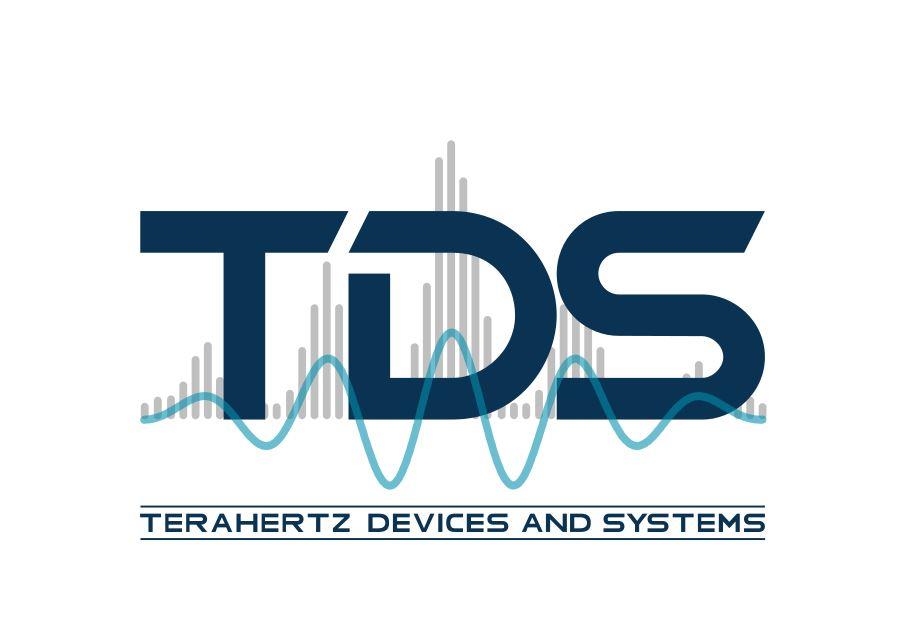Project responsible: Shihab Al Daffaie
Nanophotonics and Terahertz Technology (NTT) group is part of the Chair of Photonics in the Institute for Microwave Engineering and Photonics (IMP). The research group is interested to use the nano- photonic, material, and technology in the field of terahertz generation, detection and system. The research level starts from device design, fabrication, characterization, optimization, and ends to system integration.
1 – Introduction
The domain window of the electromagnetic spectrum between 100 GHz and 10THz is known as terahertz (THz) waves. The THz radiation shares the microwaves (electric) and the infrared (photonic) regions. The specific nature of terahertz (THz) radiation creates a broad and important range of applications using this regime in the fields of astrophysics, plasma technology, material science, biomedical engineering, environmental science, information processing, spectroscopy, and imaging technology as explained in Figure 1 below.
THz technology has been growing steadily in many independent fields especially over the last two decades. But it is still required to have reliable, powerful, broadband, compact, and low cost THz systems which can be realized outside the laboratory for real-world applications. Among many available terahertz sources, the photomixer is promising for its continuous-wave (CW) emission, wavelength tunability, and compact device size. However, a broadband efficient terahertz power source operating at room-temperature remains a significant technical challenge for the development of a compact terahertz system.
Conventional photomixers can partially fulfill such requirements and do often use an interdigital finger structure. Generally, the optical photomixing is an optical heterodyne down-conversion of two optical laser sources focused on DC biasing of high-speed photoconductive material. The modulated photoconductance accelerates the photogenerated carriers by the applied biasing field. The generated current oscillates at a frequency corresponding to the beat between the two optical laser sources and directly coupled to a suitable antenna for THz radiation in free space as shown in Figure 2.
The main drawbacks of this conventional photomixer summarised as the large parasitic capacitance and the limited current capability of the electrodes. Typical device failure mechanisms have been recognized due to the electromigration, thermal failure, and high-field breakdown failures [6].
2 – Early Stage Research
The work was focused to overcome the drawbacks and failure mechanisms of conventional photomixer. The work was presented new types of terahertz photomixers based on nanoelectrodes which significantly enhance the terahertz output power and the operation frequency. 1-D (silver nanowire) and 2-D (multi-layer graphene) nanomaterials are essential inventions supporting the new design as illustrated in Figure 3. The new design is placed emphasis on a reduction of the photomixer capacitance and on an improved device reliability. The work deals with two different types of terahertz photomixers, namely lateral and vertical configurations. Both silver nanowire and multi-layer graphene have been used in the lateral photomixer fabrication, whereas the fabrication of the vertical photomixer has been performed using only silver nanowire. The 1-D photomixer of both configurations produced a large reduction of the capacitance of around one order of magnitude as and high photocurrent photomixers, which result in higher terahertz power radiation and wider frequency range as compared to conventional photomixers. For the graphene photomixer, the results prove the photocurrent enhancement in the terahertz output with increased device reliability due to the graphene involvement [6].
3 – Results Benefits
The successful results bring to many project opportunities like:
- Patent project: As a results of this work a patent was presented in 2014 together with TU Darmstadt (Patent-No.: EP20120176226). Later a promotion of exploitation (SIGNOVerwertungsförderung) project was granted for around two years. Fund for the processing and utilization of the patent, title: “Herstellung nanokontaktierter vertikaler Photomischer als Funktionsmuster sowie die Charakterisierung der tatsächlichen THz-Leistung und der Grenzfrequenz”.
- DFG Project: The work result opens new research directions in THz photomixers using the nanoelectrodes which can be improved and optimized further. The Deutsche Forschungsgemeinschaft (DFG) project was granted in 2015. The proposal was suggested future work for optimization the nanoelectrodes based THz photomixers.
- EU-ITN-CELTA Project: The potential applications of the nanomaterial and terahertz technologies bring huge attention to European Commission especially in the frame work of Horizon 2020. In March 2016, the Institute for Microwave Engineering and Photonics in TU Darmstadt have successfully granted together with 11 European countries an EU project for Innovative Training Networks (ITN) named (CELTA). CELTA is the acronym for Convergence of Electronics and Photonics Technologies for Enabling Terahertz Applications. CELTA aims to produce the next generation of researchers who will enable Europe to take a leading role in the multidisciplinary area of utilising Terahertz technology for applications involving components and complete systems for sensing, instrumentation, imaging, spectroscopy, and communications. All these technologies are keys to tackling challenges and creating solutions in a large number of focus areas relevant for the societal challenges identified in the Horizon 2020 programme. To achieve this objective, CELTA is comprised of 11 leading research institutions and has assembled a comprehensive research training programme for all the 15 early-stage researchers (ESRs). CELTA integrates multidisciplinary scientific expertise, complementary skills, and experience working in academia and industry to empower ESRs to work in interdisciplinary teams, integrate their activities, share expertise, and promote a vision of a converged co-design and common engineering language between electronics and photonics for Terahertz technologies. The IMP got in total three ESR and the NTT got one ESR of those three. The NTT offered a project in CELTA titled: “Graphene-based Terahertz electronics and photonics for sensing”.
For more information please visit: http://www.celta-itn.eu/
4 – References
[1] J. Du, et al. “A cryogen-free HTS Josephson junction detector for terahertz imaging.” SST 28.8 (2015): 084001
[3] A. Martin, et al. “High-resolution passive millimeter-wave security screening using few amplifiers.” Passive Millimeter-Wave Imaging Technology X. Vol. 6548. ISOP, 2007.
[4] B. B. Hu, et al. “Imaging with terahertz waves,” Opt. Lett. 20, 1716-1718 (1995)
[5] J. Liu, et al. “Broadband terahertz wave remote sensing using coherent manipulation of fluorescence from asymmetrically ionized gases,” Conference on Lasers and Electro-Optics 2010, OSA, paper CPDB8
[6] S. Al-Daffaie, et al., “1-D and 2-D nanocontacts for reliable and efficient terahertz photomixers,”
TerahertzScience and Technology, IEEE Transactions on, vol. 5, no. 3, 2015.



